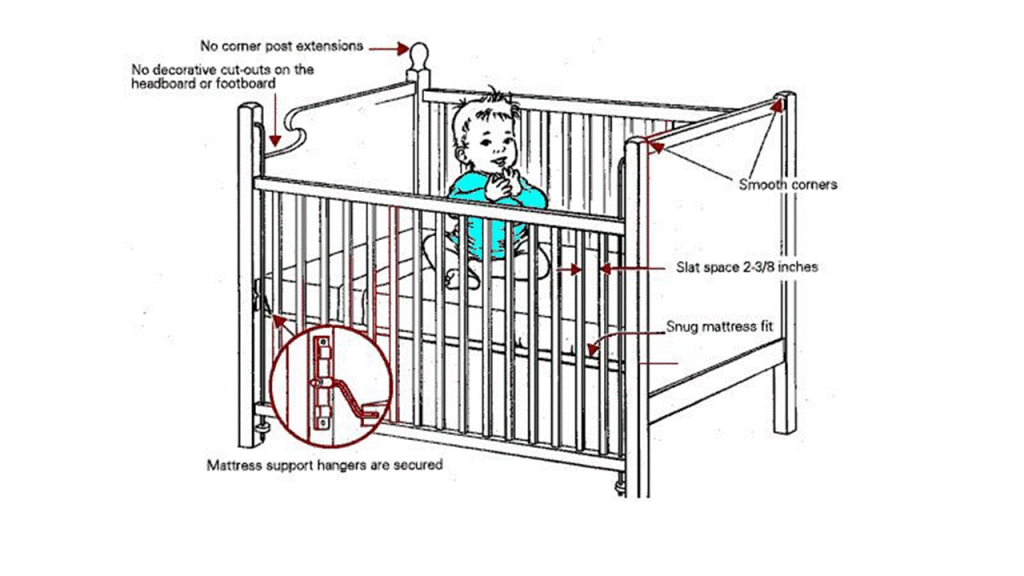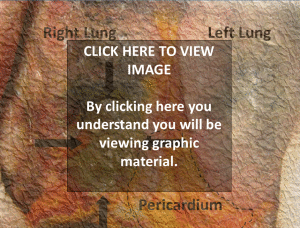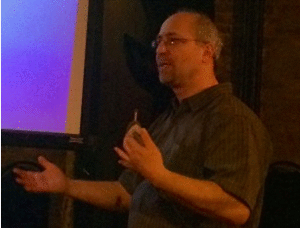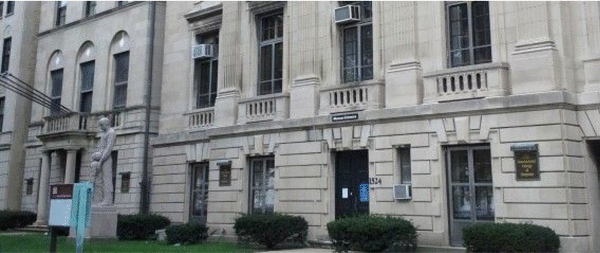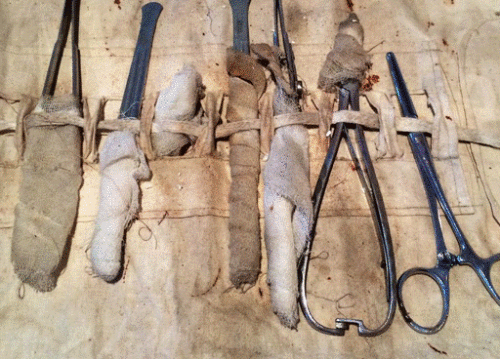Diagnosis: Congestive Hepatomegaly
What is shown? The photo shows a markedly enlarged liver (seen on the left). The liver is about twice as big as normal. Also shown is a normal liver (seen on the right and roughly the size of a football). You can see from the rulers that the scale is same in both pictures. The colors are different because the liver on the right was embalmed before the autopsy while the liver on the left was not embalmed.
How did the liver get so big? The liver got big because it filled with blood. The extra blood was entirely responsible for the large size of the liver. The blood was inside the liver’s blood vessels. The liver cells themselves did not get bigger nor did they increase in number.
How did so much blood get into the liver? The blood got into the because this patient had heart trouble. When the heart stops functioning well (can’t pump blood forward), the blood can back up into nearby organs, for example, the liver, lungs and spleen. This causes these organs to swell. That’s what happened in this case.
What does “congestive hepatomegaly” mean? Congestive (or congestion) is the term for “blood vessels filled and swollen with blood.” “Hepato” means liver; and “megaly” means “big.” So this is a “big liver from blood vessels swollen and filled with blood.”
What does this finding mean when seen during an autopsy? This finding often is part of the process of dying or it can mean the heart had been sick for a while. It’s important to know a bit more about the story to understand how to make sense of a congested liver. While very noticeable during an autopsy, the finding does not really give much information about the cause of the heart problem, or even when that problem started. It just indicates either that the heart had a problem or that the heart failed as part of the process of dying.
What was the story here? This was an elderly woman who had a complication after a minor surgery on a limb. She was in the hospital for many weeks after the surgery and then died.
What was the family’s question here? The family was angry. They wanted to understand how, if at all, the treatment or surgery may have caused their loved one to become sick and die.
Comment long hospitalizations. Long hospitalizations are particularly challenging to sort through during an autopsy. This is because, over the course of the hospitalization, many things happen to the patient. This makes it hard to figure out – just looking at the body – what problems were there before the patient was hospitalized; what problems developed possibly as a complication of a treatment; what changes indicated healing; and so on. These cases require close study of the chart, x-ray studies, and the history. And the answers aren’t always clear.
How did the autopsy help? In this case, the family was desperate to make sense of what happened. Understanding which findings (like the liver enlargement) where the result of the process of dying and which caused the death were important to sort through. Doing that allowed the family to come to terms with the medical issues and their loved one’s experience after her surgery.





